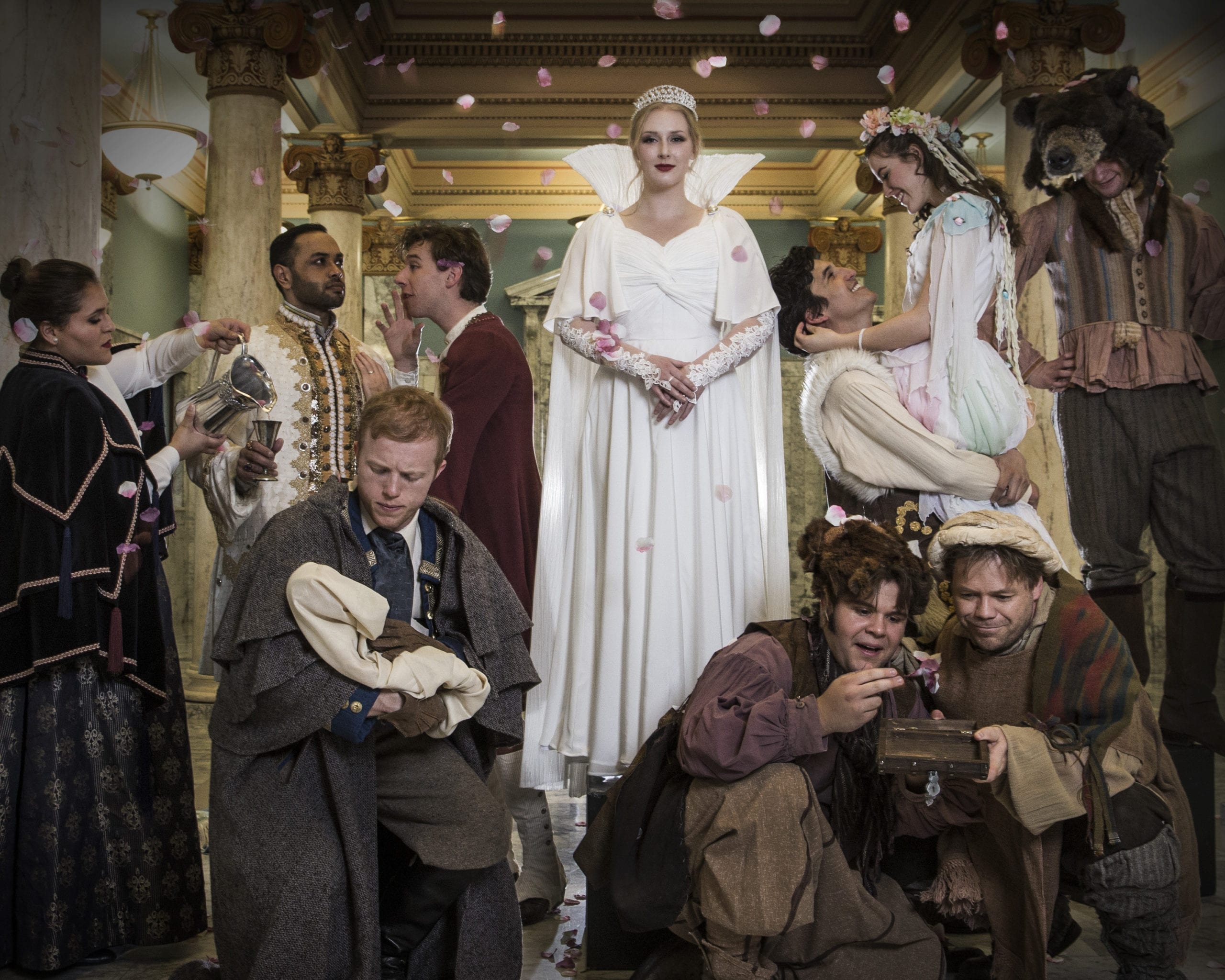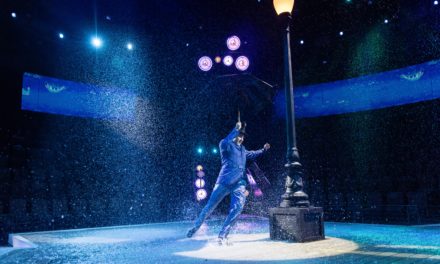OREM — More than a year into the Coronavirus pandemic, entering the Ragan Theatre at Utah Valley University for Constellations felt both uniquely strange and oddly familiar. The production, directed by Madeline Smith, is the first live, in-person staged show that I have seen in a theatre in over a year. The anticipation of returning to the theatre again has been exciting, albeit with some hesitation of when it would be safe to do so. As vaccinations are well under way in Utah and because UVU follows safety protocols to comply with state guidelines, I felt comfortable in the large and well-ventilated theatre. With a running time of around 75 minutes, the two-character drama, while small and simple to stage, is complex in its structure and subject matter. With themes of death, destiny and quantum physics, UVU’s Constellations is a thoughtful, yet underwhelming, exploration about the precariousness of life and relationships.

Show closed April 7, 2021.
Constellations, Nick Payne’s fascinating experimental drama, opened in London in 2012 and later on Broadway in 2015, both to positive widespread reception. The thought provoking and intelligent script provides heavy, emotional subject matter with a helpful amount of humor and charm throughout. The premise is that life exists in a multiverse, a set of parallel existences that contain infinitely different futures. The play follows Roland (played by Josh Phipps), who is a beekeeper, and Marianne (played by Mira Kocherhans), who is a physicist, over the course of their romantic relationship and the seemingly infinite possibilities within it. Marianne often discusses the idea that every possible event that could happen, does happen, in one universe or another. This idea is communicated in the play’s structure as the same scenes and scenarios are repeated, often with different outcomes.
Constellations is staged very simply on an almost empty stage with nothing but a honeycomb pattern taped on the floor inside a small, lighted rectangle. Lighting designer Adam Growers’s choice to light the production entirely from the sides of the stage as opposed to overhead worked well. As the lights would dim between the short scenes, warp like sounds from sound designer Hayley Christensen would also occur, indicating a change in timelines within the characters’ multiverse. The staging, lighting, and sound design all give the illusion of the characters being confined inside of a void-like experience where they exist only with each other but where their paths are ever changing. Also notable is the work of movement director Tyler Fox, who arranged dance numbers and choreography that created intimacy and connection, helping to quickly establish a chemistry between the two actors.

Josh Phipps as Roland and Mira Kocherhans as Marianne.
As Roland, Phipps conveys a nervous energy that is charming and polite. Kocherhans, as Marianne, is more assertive and a stronger force in the relationship, as well as on stage. As the character begins to become confused and has trouble with her speaking ability due to a tumor on her brain’s frontal lobe, Kocherhans is believable communicating the condition and facing her own mortality. The two actors have good chemistry at first, portraying a dynamic that is somewhat awkward but endearingly cute. It is darling watching them meet as they express surprise and intrigue in one other. I particularly enjoyed a scene where Marianne is explaining string theory to Roland, while clearly demonstrating arousal and sexual tension as a byproduct. Their budding relationship hooked me. I appreciated seeing a nuanced relationship and the depth, specificity, and complications that come from a long-term relationship.
Unfortunately, my investment in the characters and their relationship waned as the show progressed. In this format, watching the same scenes being replayed over and over again is a fascinating concept. While the character’s fundamental personality traits remain intact, they navigate their conversations similarly but with varying differences or distinctions from scene to scene, sometimes just slightly altering the scenario, sometimes drastically. With Smith’s direction, this concept was executed fine, though the longer the play went on, the tactic became stale and lost effect. I found some scenes to be too similar to each other, making it boring and repetitive to watch at times. While hard to find a perfect balance, it is imperative for a play like this that the actors keep up with the abrupt changes and vary their performances from scene to scene. Additionally, I found the ending to be abrupt and unsatisfying.
Ultimately, I was left wanting more from Constellations. With the strong source material, I felt there was potential for much more of an emotional impact than I was able to experience. That said, despite the shortcomings in the production, I was happy to sit in a theatre with other audience members again and engage with live theatre. Perhaps in another reality, I left the theatre more affected.

This review was supported by a generous grant from the Orem CARE program.




